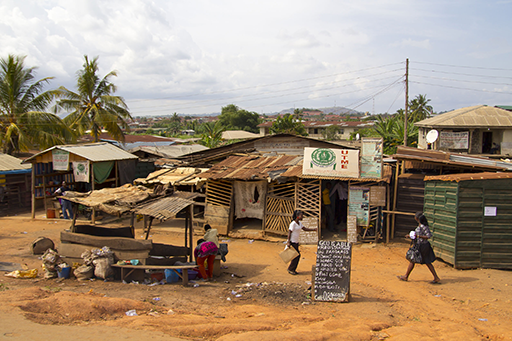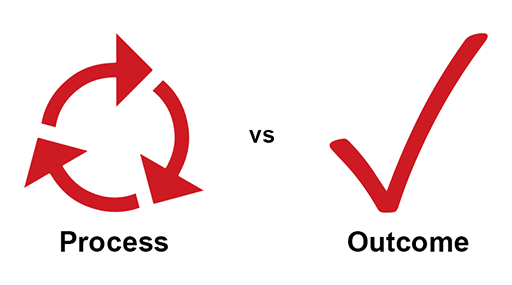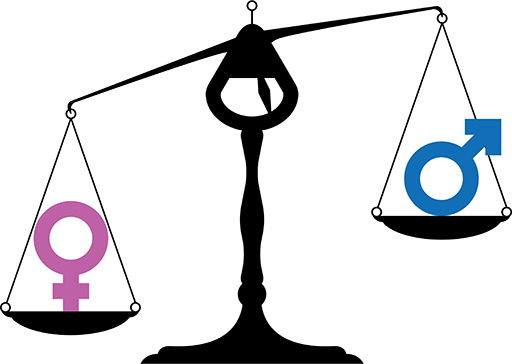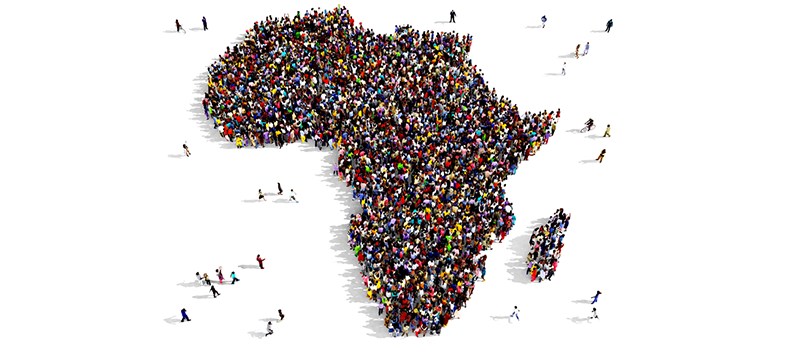1.3 Why does growth need to be more inclusive?
‘The widening gap between rich and poor is not just natural phenomena. It is a sign that much of what we have been doing, especially in terms of models of economic growth, has been wrong’ – Winnie Byanyima
This quote by Winne Byanyima, Executive Director of UNAIDS (the Joint United Nations Programme on HIV/AIDS) and an Under-Secretary-General of the United Nations, summarises the impetus for moving to IG. This is to address the deficiencies of focusing only on economic growth, and recognition that the past 30 years have seen growing inequality. While growth has occurred, its benefits have not been spread evenly across societies.
If the reason why greater inclusivity is needed is clear, to reduce the divide, then the next logical question becomes: who should be included, and how? In this section, you will look at some of the key debates and arguments around what more inclusivity looks like; but first, you will look more at how inequalities are manifesting.
Watch Video 1.2, the World Economic Forum’s brief overview of the scale of the inequalities gap and some of its key features.
Transcript: Video 1.2 World Economic Forum: economic growth and social inclusion.
The global economy is at risk.
Unemployment, rising inequality, and low productivity remain some of our most pressing global issues.
Over the last 10 years, median household income has stagnated or declined in many advanced economies resulting in a more vulnerable middle class at risk of falling into poverty.
The average income of the richest 10% of the population is 9 times higher than that of the poorest 10%.
That’s 7 times higher than it was 25 years ago.
Over the next 20 years, technology is expected to improve productivity by 30% in some industries.
But it could also leave up to 50% of workers at risk of being displaced.
We need to rethink the way our economies work.
A people-centric approach is the only way to avoid growing disparity, social instability and poverty.
Public–private cooperation is key to addressing the Global Challenge of economic growth and social inclusion.
The OECD, the G20, and the United Nations are all working towards addressing these issues.
The World Economic Forum offers reliable tools to address productivity and inclusive growth challenges such as The Global Competitiveness Report and The Inclusive Growth and Development Report.
Join the conversation, to ensure that economic growth and social inclusion are at the top of the global agenda.
Learn more: www.weforum.org
Now watch Video 1.3 by the OECD. ‘The power of four billion’ highlights what benefits can be reaped when doors to participation in the economy open.
Transcript: Video 1.3 OECD: the power of four billion.
4.6 billion people in the world want a better life, and they want to play their part in making the world a better place, but too often they can’t – only because they are young, a woman or both.
Take youth. On average, 60% of young people in developing countries are unlikely to reach their career goals. And yet getting them into education or employment could make an economy like Viet Nam’s grow by an extra 2.5%.
And women. The laws, attitudes and practices discriminating against them represent a huge cost for the global economy. If women could play the same role as men in their communities and in labour markets they would add 28 trillion USD to the global economy by 2025.
Are we holding back the power of the 4.6 billion by overlooking the evidence? By sticking to outdated laws, stereotypes, social norms? The 2018 Global Forum on Development gathers businesses, youth organisations, associations and governments to work and act together to find solutions. Because unleashing the power of youth and women will empower us all.
While evidence may show that absolute poverty levels have been declining, what the information and data in these videos show is that many people’s connection to growth is precarious. What this means for their future progress and livelihoods is escalating unemployment levels coupled with reductions in productivity, household incomes declining and failing social welfare systems. The OECD video, however, looks at the problem through a lens of needing to unlock untapped potential, in which they make particular reference to women and youth.
The inequalities gap is not just about deepening division between countries but, as the OECD video references, it is just as much a problem within countries.
A burgeoning inequality gap – the case of Nigeria
Nigeria was one of the four fastest-growing economies in Africa that was the focus for MIAG. It has been popularly referred to as the ‘Giant of Africa’. This is because of its population size, at the time of writing just over 206 million, but also because of the size of its economy.
Since oil was first discovered in Bayelsa State in 1956, it has consistently been the largest producer of crude oil on the continent. Despite being resource-rich, with an annual income from oil exports estimated at $20–40 billion (OPEC, 2017), according to the World Poverty Clock [Tip: hold Ctrl and click a link to open it in a new tab. (Hide tip)] , in 2018 Nigeria overtook India as the world’s poorest country, with 86.9 million people classified as living in ‘extreme poverty’ – nearly 50% of the total population (Kazeem, 2018). At the time of writing, India has regained the title but the margin between them is small.
With access to a wealth of resources, including oil, minerals and fertile land for agriculture, why would such a powerhouse of an economy be seeing these extreme levels of poverty and escalating inequalities?
Activity 1.3: Telling the story of Nigeria’s growing inequality globally and nationally
Figures 1.4–1.7 show yearly levels for four different indicators that the MIAG project used in its quantitative analysis to measure growth, drawing on data from the World Bank and International Labour Organisation.
Each figure shows the years 1990–2018, which is the 30-year timeframe that the project chose to cover.
Now you will look at some of the main debates around how inclusion can happen.
IG has been a feature of the financial global agenda for over a decade, but it has only recently been subjected to sustained academic attention (van Niekerk, 2020). One of the most contentious and confounding issues in debates centres around the nature of inclusivity.
The AfDB (2016) terms growth as inclusive if it is for ‘the benefit of widest social and economic groupings’. Ianchovichina and Lundstrom (2009), writing for the World Bank, deem inclusivity to be ‘inclusive of the large part of the country’s labour force’.
There is a vagary with which inclusiveness is referred to in statements like these that are common to the IG literature. They often lack any definitive attempt to delve into more detail of who should participate, when and how. Despite this, however, there are some shared threads in the inclusivity debates, and here you will look at four of the key ones:
- pro-poor versus broader-based development
- process rather than outcome
- gender
- multidimensionality and trade-offs.
Pro-poor versus broader-based development

Ranieri and Ramos (2013, p. 4) stress that there is little debate that IG emerged out of rethinking in the development literature calling for a reorientation of growth to benefit the poor: ‘growth is not inherently pro-poor; therefore, growth processes need to be calibrated for pro-poor growth to be obtained’. Their point reiterates there is agreement on the need for IG to be poverty-reducing. However, there is significant division between those who see IG as an exercise in benefiting and enabling the poorest and most marginalised/vulnerable sections only (that is, a pro-poor agenda), and those who see pro-poor poverty reduction as only one component within wider efforts to develop society more broadly.
For the latter, growth needs to be sustainable and broad-based across all sectors, and inclusive of the majority of the labour workforce (Ianchovichina and Lundstrom, 2009). Rather than just bringing the poorest into the growth equation to bridge the inequalities gap, growth is seen as a wider societal development goal so that all benefit, but with special attention and provision given to enable growth amongst the poorest (Sumner, 2017; Asian Development Bank, 2011).
Whichever side you stand on, the argument indicates a need to be clear about who the poor are, how they are being defined and whether those then deemed as living in poverty need to be considered separately from the rest of society in the process of IG.
Process versus outcome

Along with the realisation that conventional growth needed an overhaul came the awareness that existing models were outcome centric. The preoccupation with GDP, employment figures, inflation rates and productivity levels consider growth as more inclusive if the benefits are more evenly distributed.
Inclusion is therefore a by-product of growth without an explicit proviso of whether those who benefit are taking part in the growth-generation. Putting more emphasis on participation shifts thinking to a view of inclusion as a practice (Ranieri and Ramos, 2013), whereby broader sections of society once excluded become active agents of growth. IG then is more of a process, the quality of which is judged by those participating in growth.
Gender

Much of the IG literature speaks of the importance of gender-sensitising IG (ADB, 2008; Crush et al., 2017). The rationale rests on recognising that women are frequently the most vulnerable, marginalised and impoverished.
In many developing countries, their inclusion in the labour force is largely through informal sectors, so they are often overlooked. Video 1.3 estimated that if women can participate and play the same role as men in economies, they would add $28 trillion to the global economy in just five years.
The issue of women’s increased inclusion is also symptomatic of a wider need to target vulnerable and discriminated groups, such as marginalised ethnic or religious groups.
Mulidimensionality and trade-offs

The difficulty in pinning down a definitive understanding of IG may rest on the complexity of the problem – the list of factors and conditions are multifaceted. Whatever mix a conceptualisation includes, there are likely to be conflicts and trade-offs between different dimensions of the equation that will impact on the growth-equity relationship.
IG is not likely to be a straightforward, simplistic and linear process (Anand et al., 2013). The link between political space and growth is one example, such as with the Arab Spring Uprising, which was preceded by an exceptional period of economic growth. The violence and unrest that emerged was a direct response to the inequity of the benefits reaching the majority, although the political unrest halted this growth.
Instability in a country due to political change can, in the short-term, reduce growth. How these different aspects of growth interrelate could be an important point in a conceptualisation, but it also indicates the possible need for factoring in short-, medium- and long-term conditions (Hakimian, 2013). So there is broad recognition that careful consideration needs to be given to how different policy areas combine, synergise and create trade-offs to generate IG.
Activity 1.4: Reflecting on the four issues
Take a moment to think about the four issues that are at the forefront of shaping thinking around IG:
- Did you find yourself agreeing with one side or the other in a debate?
- Are you pro-poor, or do you think that growth needs to benefit everyone more broadly?
- Would you consider prioritising greater participation of women, even if it meant there was a trade-off that would disadvantage another group in a society?
Discussion
There are no right or wrong answers, because all are valid; debates about choosing process over outcome are not really polarising because they are not mutually exclusive. It may be possible to conceptualise IG in a way that values both. In theory, trying to simultaneously lift the poorest out of poverty would not be incompatible with trying to close the gap between the top and bottom.
From just these four factors, you can see how complex and multifaceted the problem is, which is why perhaps an all-encompassing, comprehensive and clear understanding of IG is so elusive. While it is natural that understandings of a normative ideal like IG can differ and evolve, it does create implications for how IG is studied empirically or analysed, and how this translates into actionable policy – as you will see in the next section.
Developing the MIAG framework
